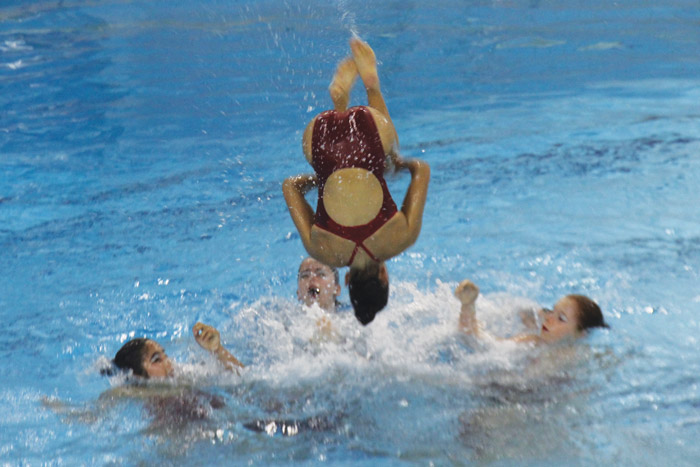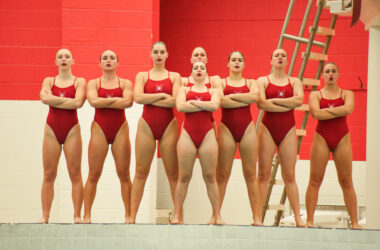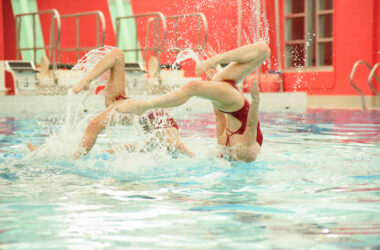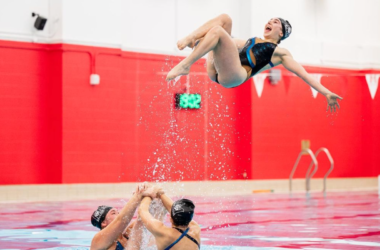Artistic swimming—renamed from synchronized swimming in 2017—is often portrayed as a combination of swimming and gymnastics. However, the sport deserves to be considered in its own right. Artistic swimming is affectionately referred to as “synchro,” and individuals who participate in the sport have good reason to love it. Being an artistic swimmer requires a unique combination of strength, endurance, speed, and flexibility—both physical and mental.
Artistic swimming is undeniably niche, which can make it difficult to find local teams. However, McGill has one of Canada’s strongest collegiate artistic swimming programs, consistently medaling at the Canadian University Artistic Swimming League (CUASL) championships. In February, the Martlets received the CUASL Gerry Dubrule Trophy, which is awarded to the best overall team each year. The artistic swimming team also won McGill’s Harry Griffiths Trophy for non-U SPORTS varsity team of the year.
There are three main events in artistic swimming: Solo, duet, and team, though only duets and teams are featured at the Olympic level. Teams routinely feature eight athletes who often compete in multiple events, each requiring a separate skill set. At the junior and senior levels, there are two types of routines for each of these events: Technical and free.
One example of a stellar routine is Jacqueline Simoneau and Karine Thomas’s 2015 Canadian national technical duet. The program was so creative, one might forget the complexity required. Technical routines must include Fédération internationale de natation (FINA)-regulated sequences or elements and, with few exceptions, all swimmers must perform the movements in unison.
Free routines, on the other hand, have no limits and exude creativity. The possibilities are endless and filled with surprises. There is no other sport where one would see a team lifting an athlete while they spit out pool water, as the Canadian national team at the 2012 Olympics in London did. Canada has traditionally been dominant on the Pan American artistic swimming stage and is the only country in the Americas to have already qualified both a team and duet for the 2021 Tokyo Olympics.
Routines in artistic swimming generally range from two-and-a-half minutes to four minutes. This may not seem like a long time, especially to the audience, but when choreography comes down to the millisecond and requires constant motion, each routine can feel like a lifetime for the athlete. The sport also requires extreme attention to detail in the routine’s movements. To perfect the small details, conditioning, both on land and in the water, is a regular part of athletes’ training programs. Athletes and coaches spend hours working on synchronizing movements in preparation for competition.
Even at the highest level, many artistic swimmers balance these hours of intense practice with other obligations such as academic work. Although artistic swimming may not receive the same spotlight as other sports, artistic swimmers still put in intense hours of training.
Since artistic swimming is such an under-appreciated sport, it can be difficult to find coverage even of competitions at the highest level. Inside Synchro and Fishtail Magazine work to fill that void in sports reporting as the two artistic swimming-focused publications currently in print worldwide. Especially during the pandemic, these news sources provide a crucial means of highlighting the artistic swimming community, which is small and dispersed, yet very collaborative. In many ways, the special nature of the community encourages such collaboration. That solidarity, combined with the beauty and diversity of skills required to do the sport, is what makes artistic swimming special.









